- Login
Critical Spatial Practice
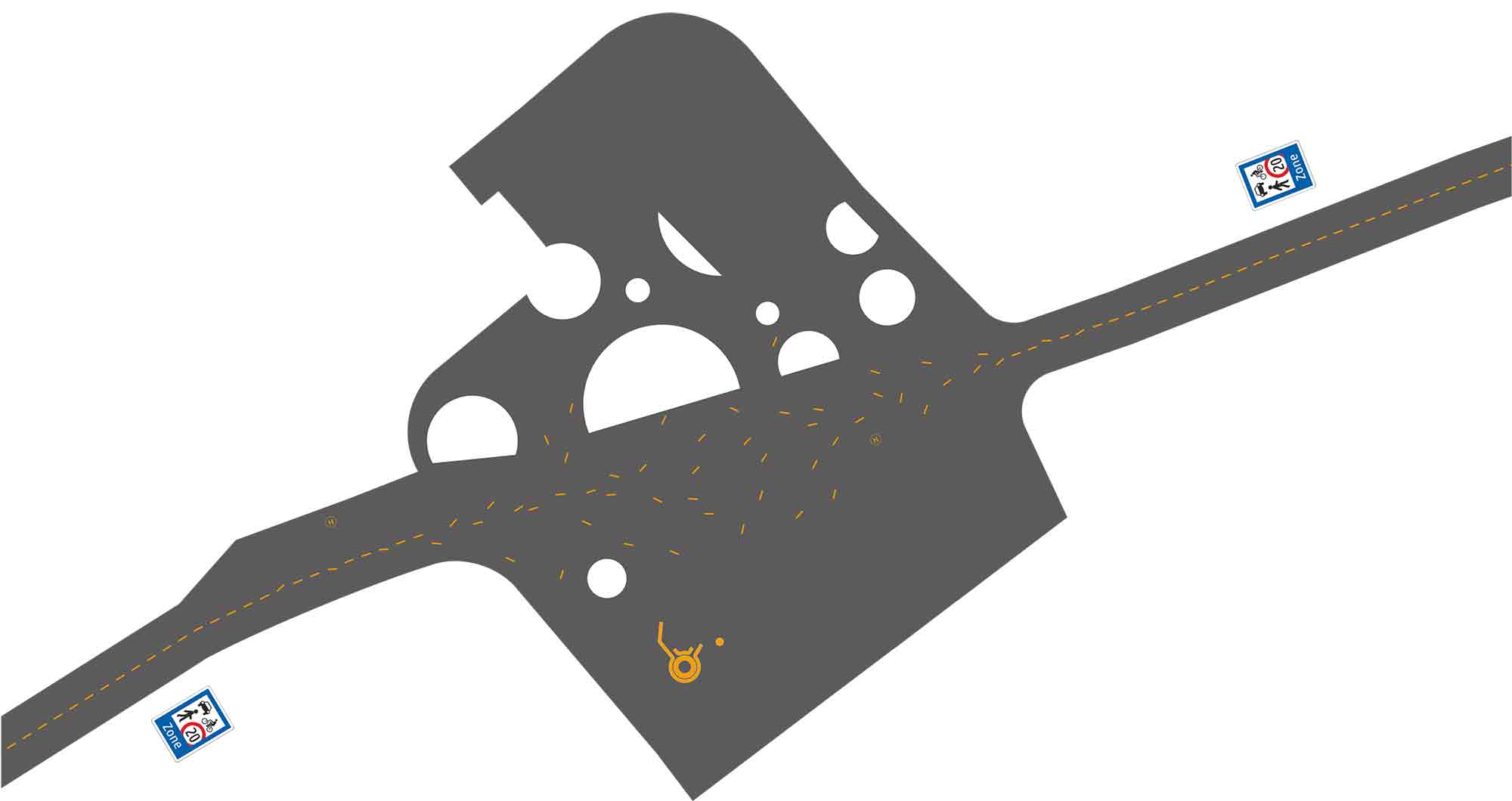
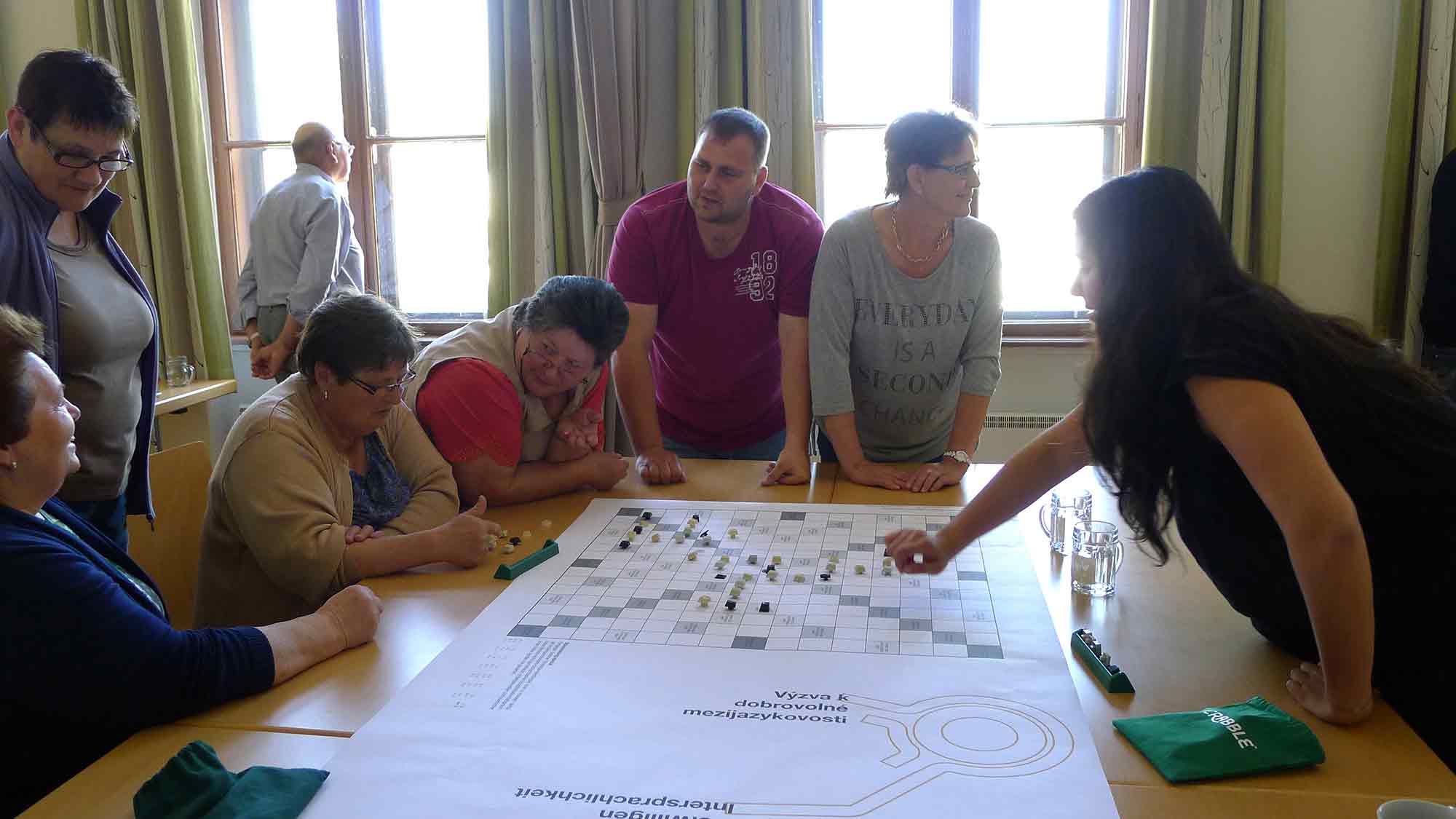
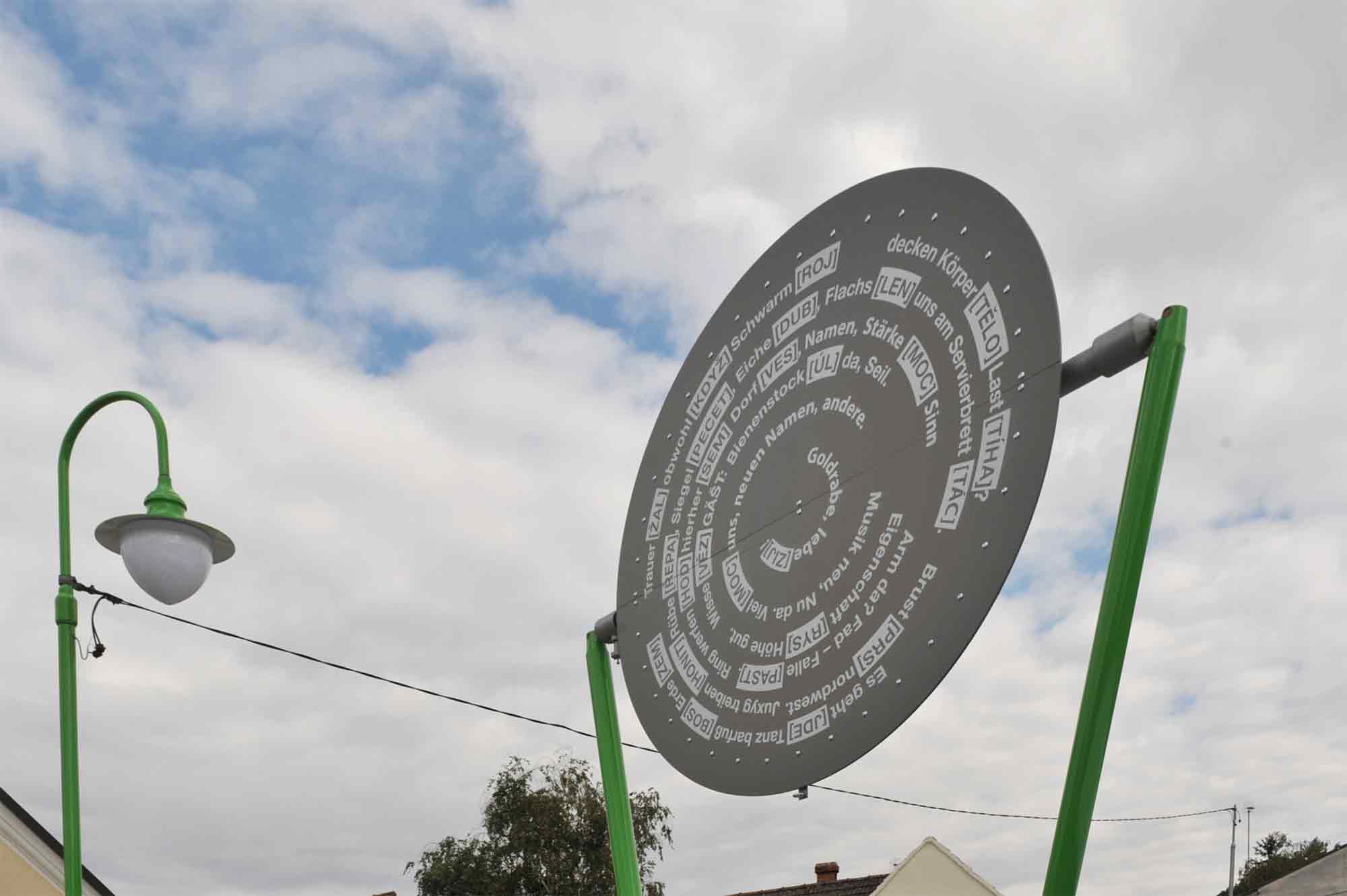
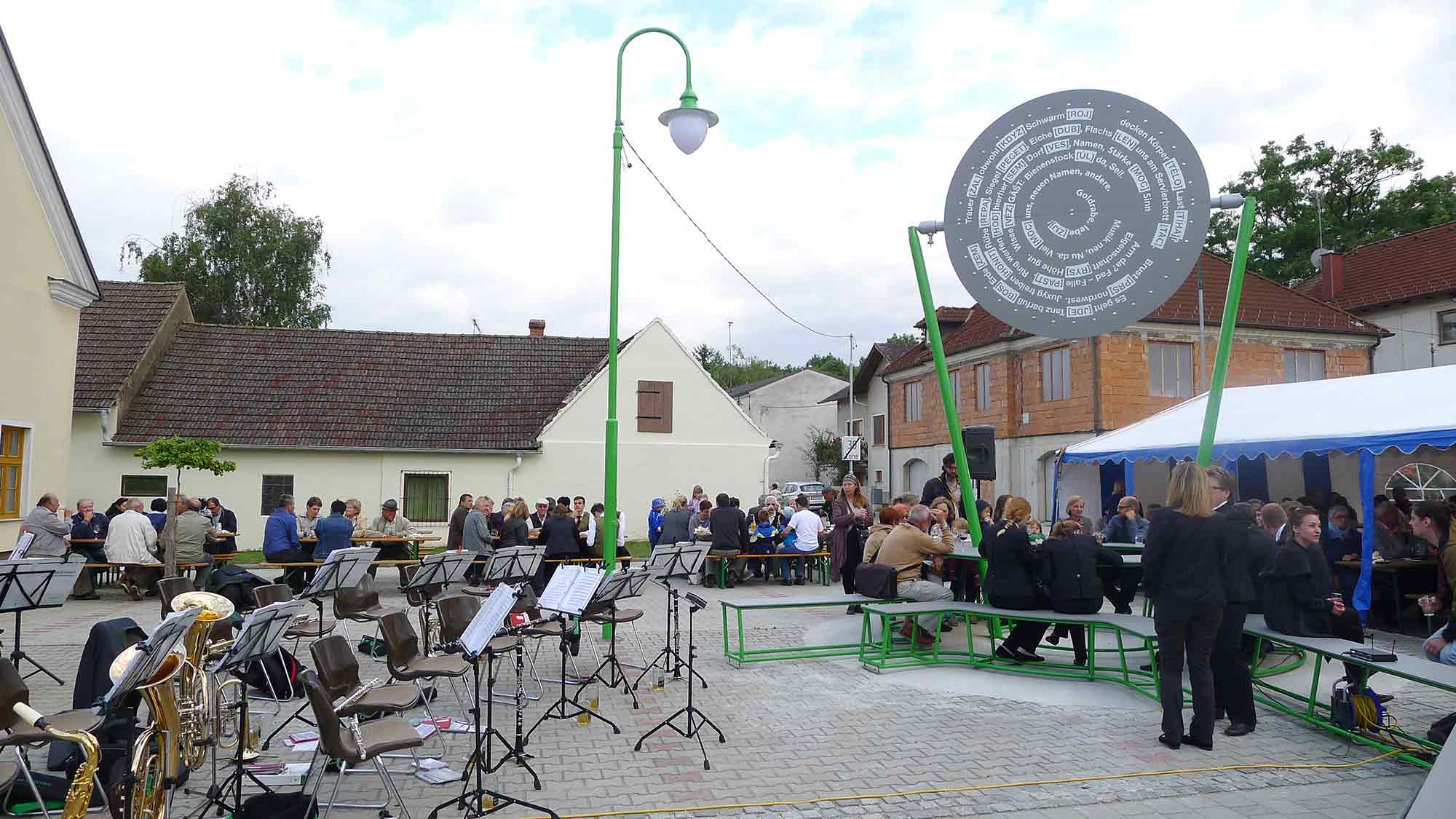

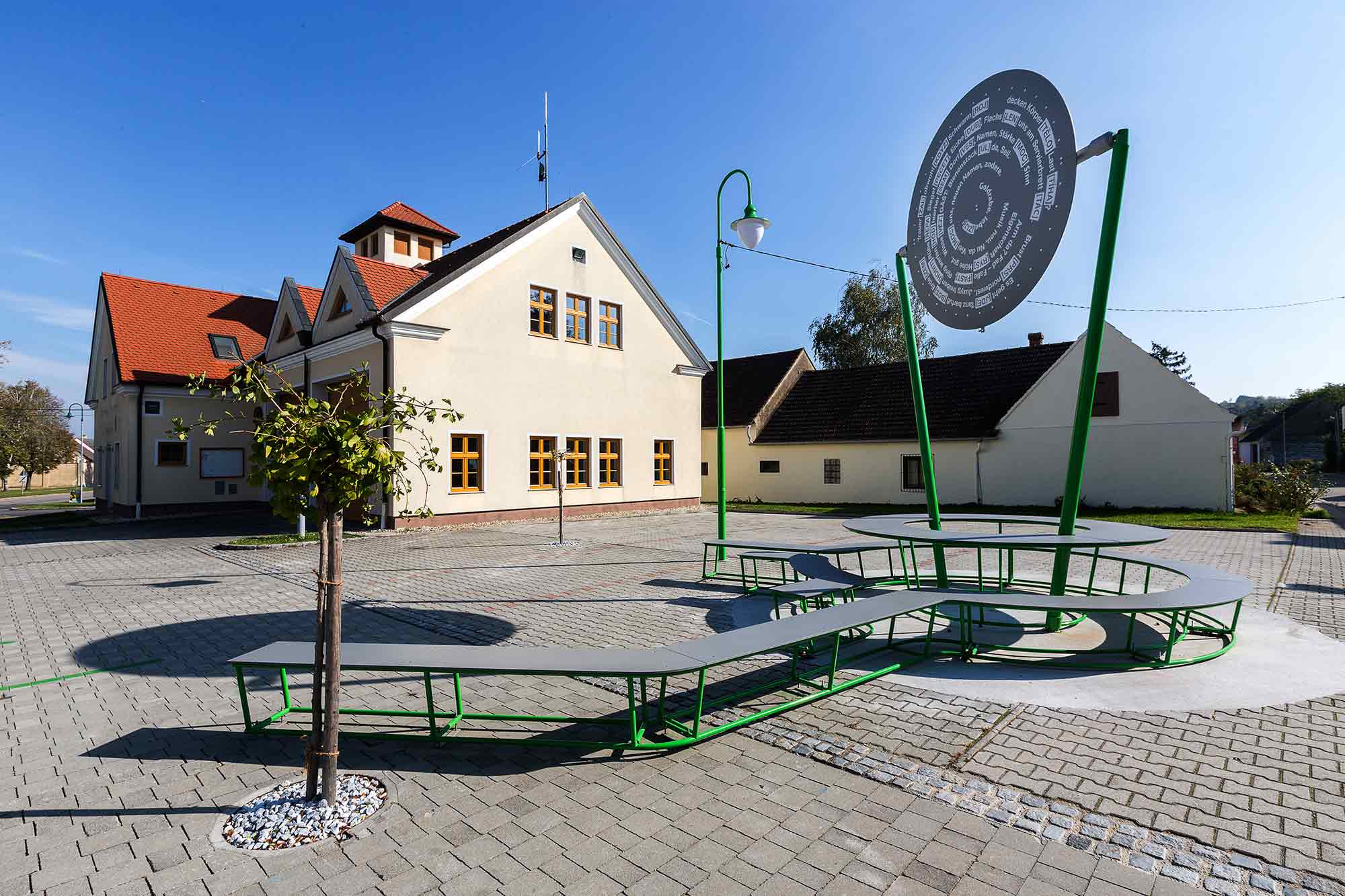
A bilingual (czech-german) scrabble-game served as tool for generating a text for the seating sculpture defining the new square. The words collected during the game formed the resource for an experimental poetic bilingual text which was only made possible through this collaborative process.
The idea of being requested to voluntarily do something unrequested, as transparadiso’s title Request for the unrequested voluntary inter-linguisticality for their design for a public square in Pottenhofen suggests, seems contradictory at first. The artistic work of the artist group, which was founded by Barbara Holub and Peter Rajakovics, often revolves around the idea of sounding out interferences (architectural as well as social) and identifying the ways of taking action that develop as a result.
This was also the case in Pottenhofen, which is a small village located in the northern Weinviertel region of Austria, near the Czech border. A very busy country road runs through the middle of town, acting as a kind of structural divide. When the town decided to transform the former elementary school into a community center, complete with a grocery store and a youth club, the town soon had a second idea to commission artists to design the divided area in the town and give it the quality of a village square. The selection committee then directly handed the commission to transparadiso.
Their solution, Request for the unrequested voluntary inter-linguisticality, consists of several parts and is intended as a work in process. In addition to setting the speed limit at 30 km/h and laying a road marking that runs across the street and creates a sense of cohesion, a shade-providing tree was also planted, and a typical Czech street lamp was installed. The heart of the project is a circular seating arrangement that stands for transnationality and acts as a monument against recurring populist demands for reinforcing borders. Most importantly, this metal seat & table sculpture symbolizes the potential of working together as a community. The rotating sun roof is also decorated with new German and Czech words that resulted from a cross-cultural game of Scrabble with the inhabitants of the neighboring village of Brezi in the Czech Republic.
(Maren Richter)
transparadiso (Barbara Holub/ Paul Rajakovics)
In 1999 Barbara Holub and Paul Rajakovics founded transparadiso as a transdisciplinary practice in between art, urbanism, architecture, between practice and theory. transparadiso has coined the term ‘direct urbanism’, involving artistic-urbanistic strategies for a socially engaged and process based urban planning.
Holub was visiting artist and visiting professor at the University of Applied Arts Vienna (2014-2016). She lectures at the Vienna University of Technology, where she directed the research project “Planning Unplanned – May Art Have a Function? Towards a New Function of Art in Society” (2010-2013). Rajakovics was co-secretary of EUROPAN (2004-2007), assistant professor at the Dept. of Housing/ Vienna University of Technology (2009-2017) and directed the research project ‘Anders günstig’ (with Lower Austria) developing context-based housing for refugees for positioning a “welcome culture” (2016).
transparadiso received the Austrian National Art Award (2018); Otto-Wagner-Award for Urban Planning (2007), Schindler Grant, MAK Center for Art and Architecture, Los Angeles (2004); Member of the editorial board of derive_magazine for urban research, Vienna.
Barbara Holub was president of the Secession, Vienna (2006–2007); member of: advisory board of Art & the Public Sphere Journal; World Council of Peoples for the United Nations, New York; Expert Committee of the 5th Ural Industrial Biennial/ Ekaterinburg (RUS); Jury “Culture in Public Space”, Stuttgart (D).
Selected publications: Direct Urbanism, Verlag für moderne Kunst (2013); Barbara Holub/ Christine Hohenbüchler (eds.) Planning Unplanned. Can Art Have a Function? Towards a New Function of Art in Society, Verlag für moderne Kunst (2015).
Selected projects: Festival of Regions (A, 2019); Wimhölzel_Hinterland (Linz/ A, 2019-2017); The Bienvenue Quarter (Vienna/ A, 2016-2022); The Island is What the Sea Surrounds, European Capital of Culture/ Valletta18 (Malta, 2018); Request for the unrequested voluntary interlinguisticality (Pottenhofen/ A, 2016); Paradise Enterprise (Judenburg/ A, 2012-2014), Stadtwerk Lehen (Salzburg/ A, 2009-2013).
Direct Urbanism involves art and artistic strategies in a durational process in urban
development – on an equal level to conventional planning strategies:
_for a socially engaged and process orientated urban development
_for addressing current urban issues as complex societal issues
_emphasizing public space as space for appropriation by the inhabitants/ users/
consumers (see Michel de Certeau)
Direct Urbanism is a new method of planning beyond ‘bottom up’ and ‘top down’.
Direct Urbanism relates to direct action (Emma Goldman): It produces ‘situations’ for direct engagement and action, returning responsibility to people on site (see: ‘Silent Activism’/ Barbara Holub). For direct urbanism we have developed a number of tools and artistic-urbanistic strategies (see our publications Direct Urbanism and Planning Unplanned).
Critical spatial practice connects all our projects, directly concerning ‘direct urbanism’, as well as other projects in between art, architecture and urban intervention, between theory and practice.
Our projects are characterized by our societal engagement aiming at a collective production of space and producing a specific aesthetic related to the context.
Michel de Certeau, The Practice of Everyday Life, (Arts de faire), (Paris, 1980)
Jonathan Hill (ed.), Occupying Architecture. Between the Architect and the User, (Routledge, 1998)
Henri Lefebvre, The right to the city, (Le droit à la ville), (Paris 1968)
Video (in German) produced by Public Art Lower Austria
http://www.publicart.at/en/projects/all/?pnr=892&weiter=1



































































